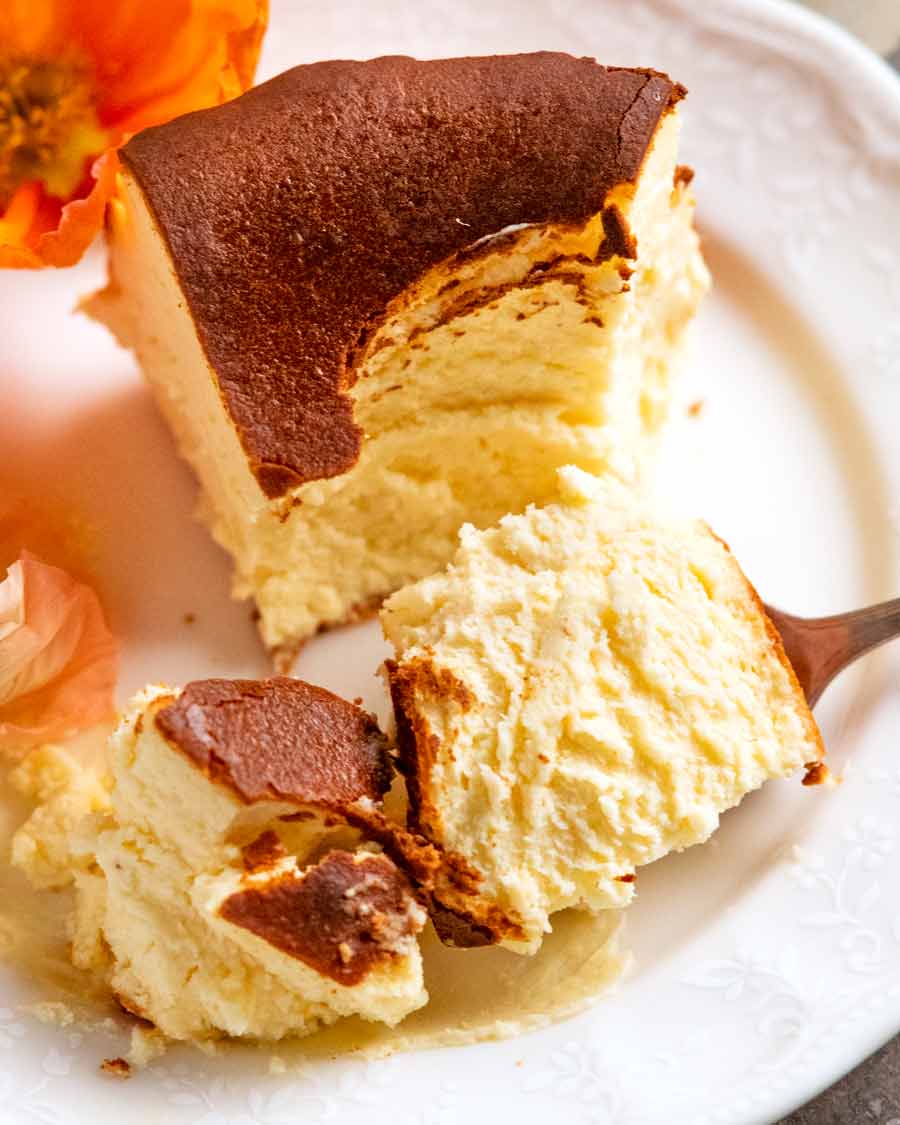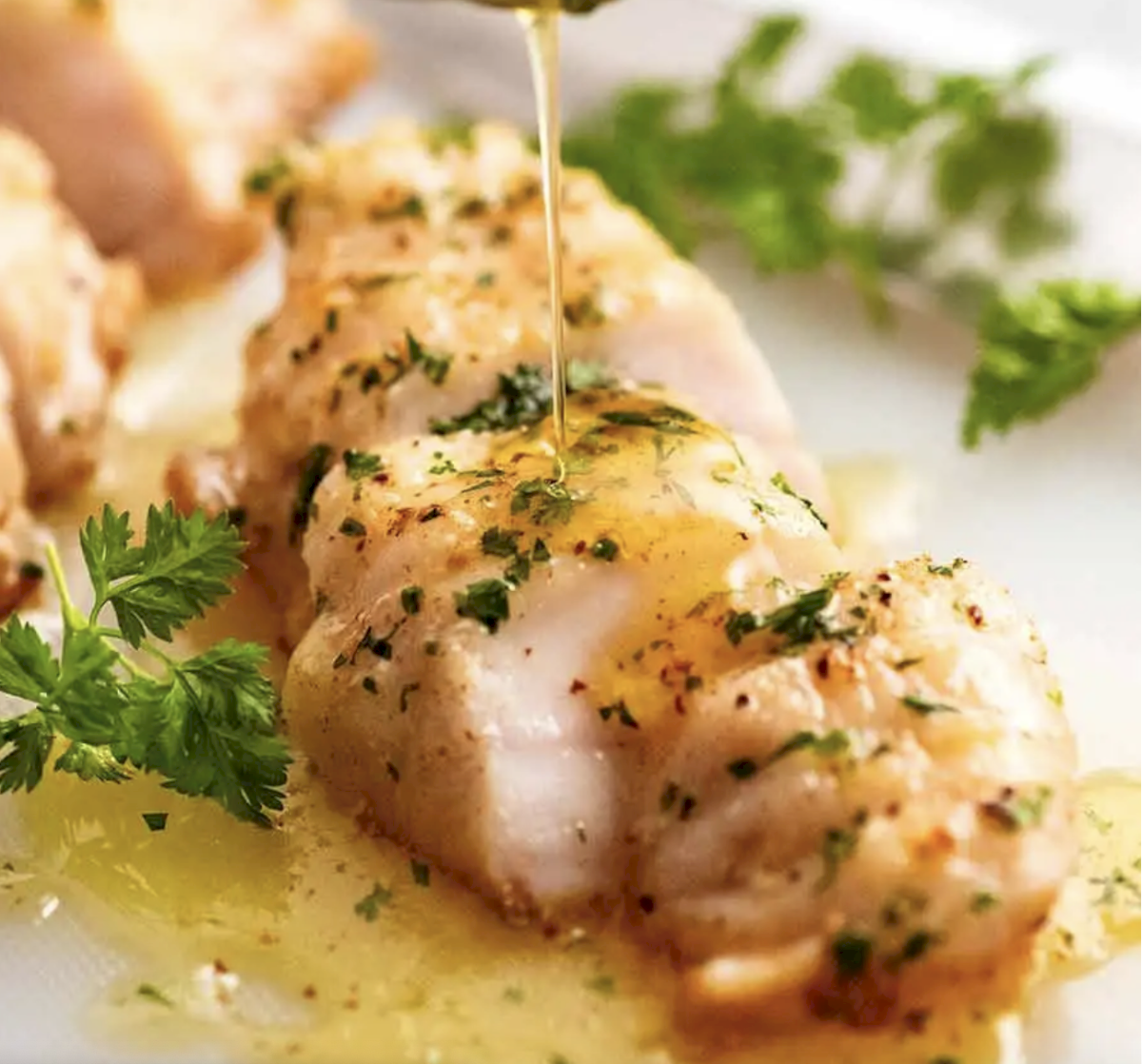The iconic Basque Cheesecake has landed! With a mousse-like creamy vanilla texture and gorgeous golden “burnt” surface, the flavours remind me of créme caramel. You’ll be amazed how easy this recipe is (she says, 25 versions later 😅).

Basque cheesecake
The next time you want to make a cake that really stands out, make this Basque Cheesecake. Sure, people ooh and aah over the appearance. That golden surface, after all, screams look at me!
And you’ll get street cred for making something that’s on-trend. Though, I’m a few years late. Everybody knows I’m not cool enough to keep up with food trends. 😂
But it’s the eating part that really blows everyone away. Beautifully light and airy inside, almost like mousse. Just sweet enough, tastes luxurious yet not at all rich.
And of course, there’s the “burnt” surface, with the distinct caramel flavour. Combined with the vanilla cheesecake underneath, the flavour reminds me of créme caramel. It’s to-die for!
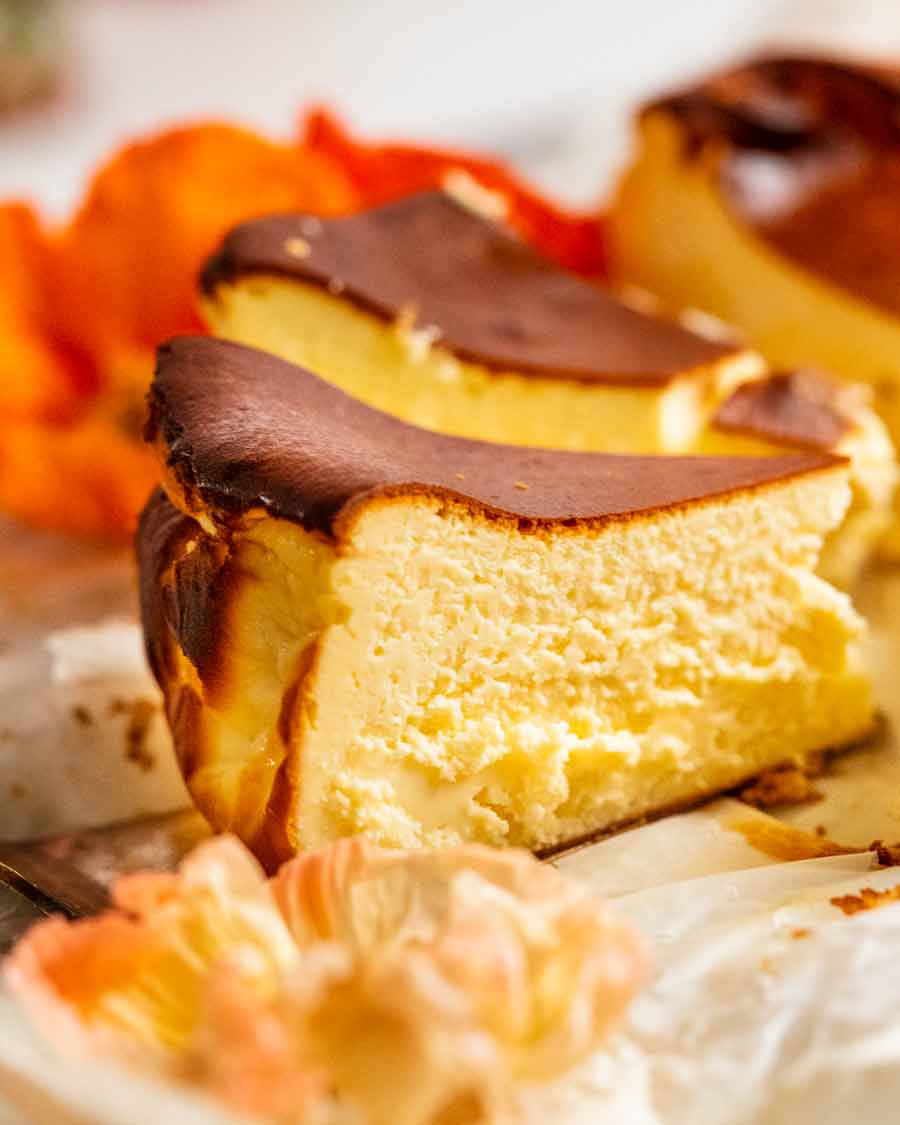
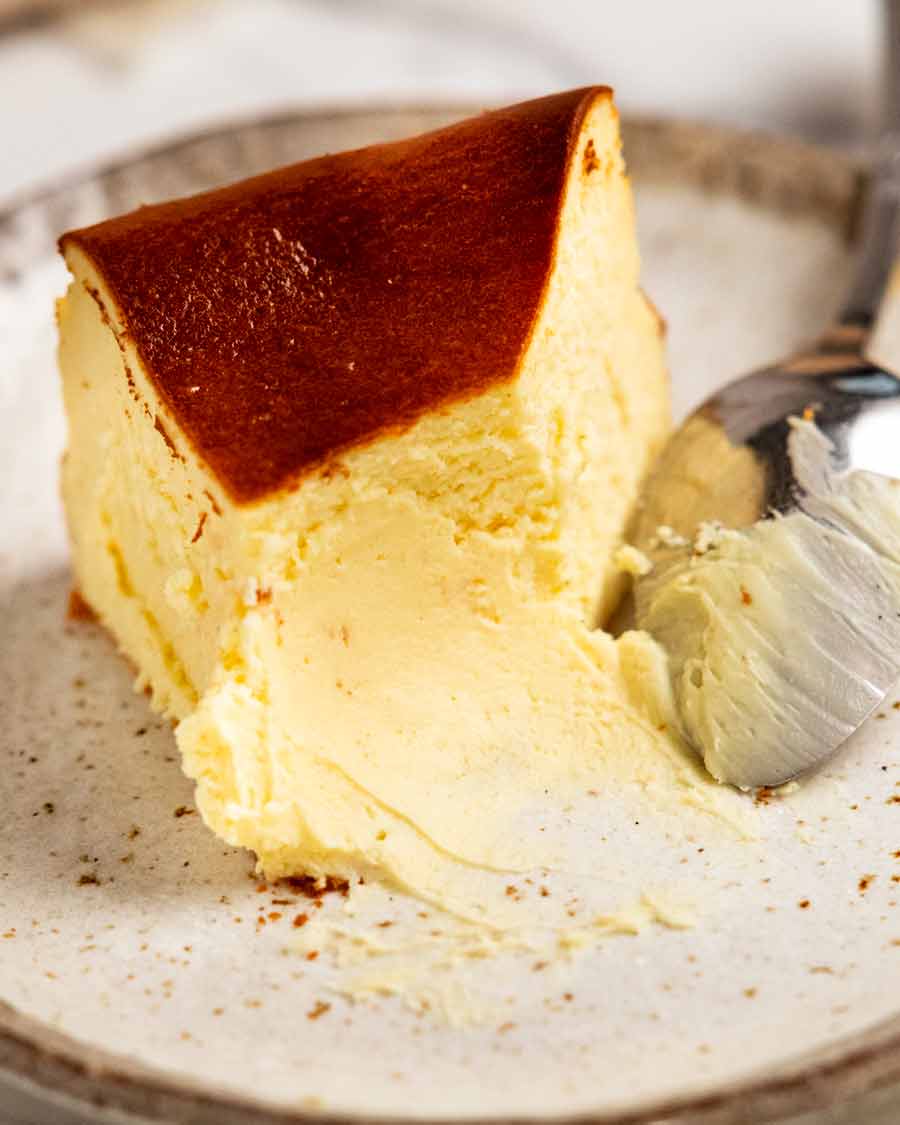
What is a Basque Cheesecake?
Basque cheesecake is an iconic baked cheesecake hailing from San Sebastián in Spain’s Basque Country (hence the name!). It’s become increasingly popular over the past few years, thanks to food media and celebrity chefs singing its praises.
It’s a crustless cheesecake (I promise you won’t miss the biscuit crust!) with a signature “burnt” surface. To me, Basque Cheesecake tastes likecréme caramel, with the caramel flavour of the golden surface and patchy sides, and vanilla cheesecake underneath.
The texture of Basque Cheesecake is unique, much lighter than most cheesecakes. It sits between the extremely fluffy soufflé-like Japanese Cotton Cheesecake and my classic baked cheesecake, while the much denser New York Cheesecake is on the far end of the spectrum.
Shop-bought Basque Cheesecakes are pricey (think, $60+) and all too often fall short of expectations. Too dense, too sweet or a thick band of dry overcooked cheesecake on the base and sides are common gripes I’ve had.
So if you want a really great one, make a homemade one! This one, of course! 😇
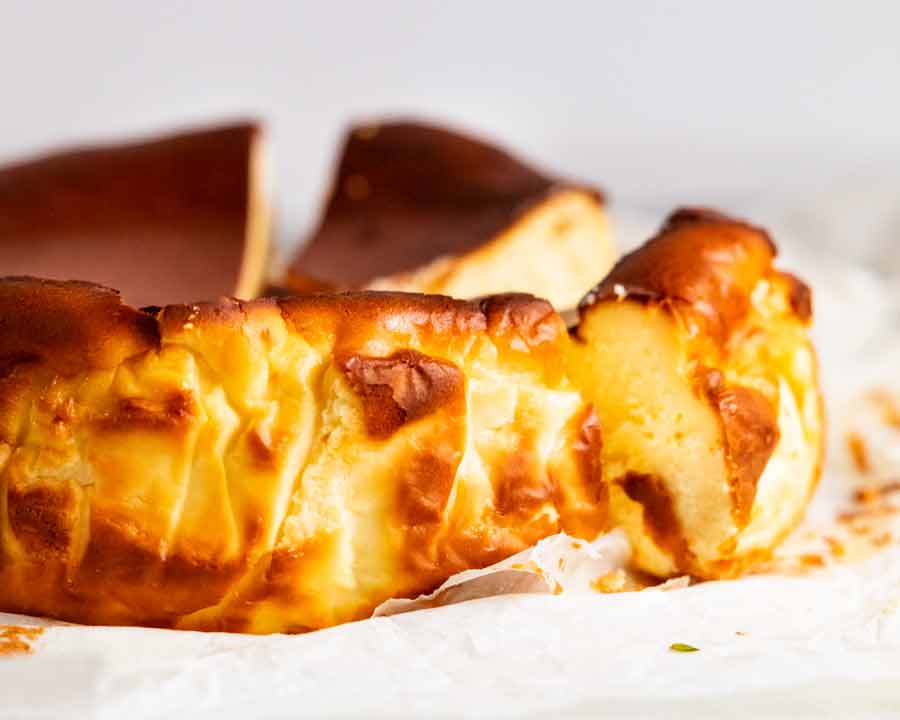
Ingredients
There’s very few ingredients in Basque Cheesecake. Making a great one comes down to technique!
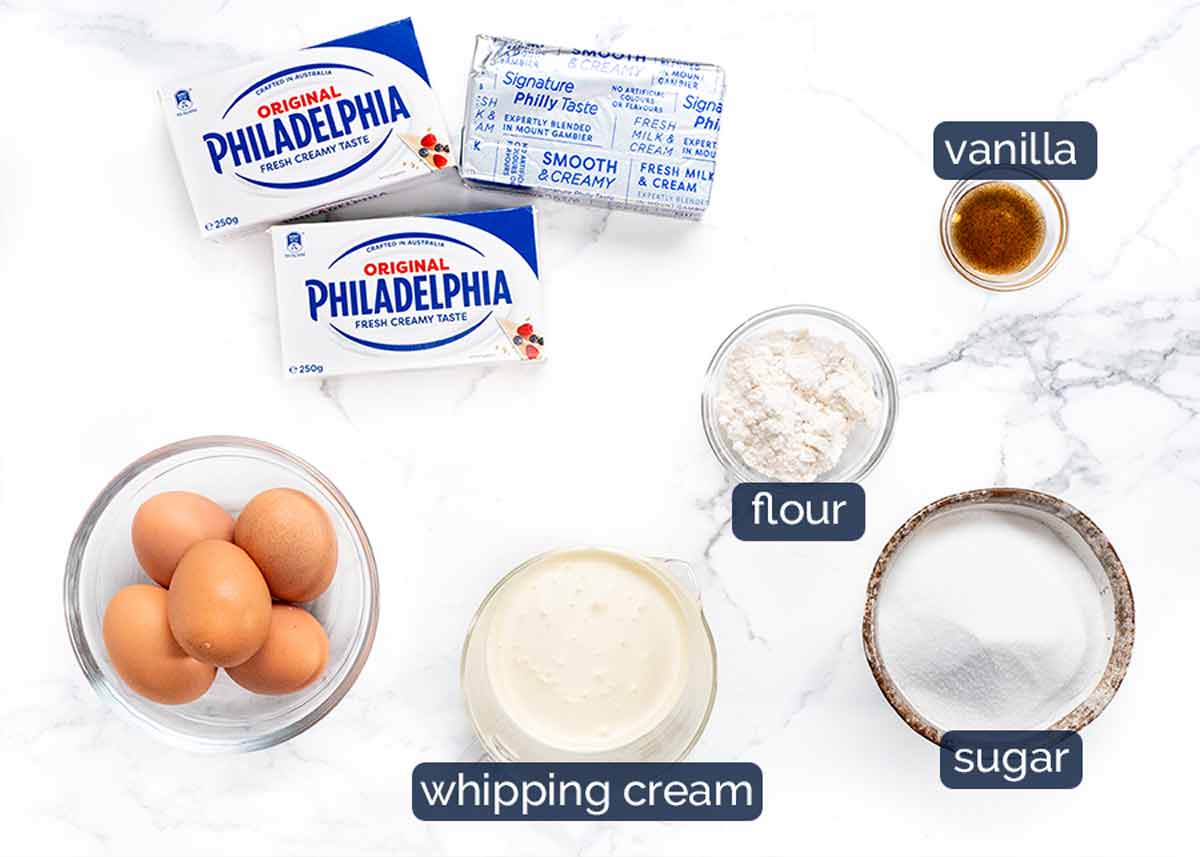
-
Cream cheese – Philadelphia is my go-to, but we made this with a variety of brands (including most economical) and it still worked great. Tub spreadable cream cheese also works, albeit the inside is marginally more creamy (some would find it even more appealing!) But DO NOT USE LOW FAT! Won’t set properly.
-
Measuring the eggs – This recipe calls for 220g / 200 ml / 3/4 cup + 1 tablespoon of whisked eggs which is 4 to 5 large eggs. Yes, I really need you to measure the eggs for this recipe, because those selfish chickens, they just won’t lay the same size eggs every time! And using the right amount really matters for the best outcome with this recipe. Too little, and the cheesecake won’t set. Too much, and it gets denser.
I rarely ask this in cakes – only when it matters. So please measure the eggs! Crack, whisk, measure. 🙂
-
Whipping cream – Make sure you use cream that can be whipped. Not all creams are, some are made for just pouring or dolloping. Read the label to check. And – NO LOW FAT! 🙂
The recipe calls for you to take it out of the fridge 15 minutes prior to use. This is to take the fridge chill out of it slightly, so it incorporates better with the other ingredients.
-
Flour – This stabilises the filling so it stays aerated and fluffy once baked. We use the minimum amount possible – too much flour makes the filling drier.
-
Vanilla – Use vanilla extract or bean paste. Imitation vanilla flavour is not as good because it’s….well, it’s imitation. 🙂
-
Sugar – Caster / superfine sugar is best here as the grains are finer so it dissolves more easily. However, regular sugar can be used too.
How to make Basque Cheesecake
Basic recipes will have you just dump everything into a bowl and mix. Easier. But the inside is not as light and airy, as Basque Cheesecake should be!
LINING THE PAN

-
Scrunch up baking / parchment paper in your hands. This makes it easier to press and stay in the pan as well as creating the signature rustic sides on the cheesecake.
-
Fit the paper into the cake pan. There’s no need to grease the pan to make the paper stick, just fit it in – the batter will weight it down. Press the paper into the corners of the pan and fold the sides down over the rim.
Don’t be tempted to try to make the cheesecake sides smooth by lining the cake pan the traditional way with flat strips of paper! The crumpled paper actually keeps the sides of the cheesecake from overcooking as it’s not fully pressed against the pan walls. Flat paper = thicker band of drier cheesecake. Tried and tested!
BASQUE CHEESECAKE BATTER
No tricky steps here! The method is designed specifically to achieve an incredible delicate, “mousse-like” texture that you get with the very best traditional Basque Cheesecakes.

Use a handheld electric beater or stand mixer with the paddle attachment. I personally prefer hand-held beater because the beating times are pretty short, and you can move it around which means less scraping down sides.
-
Beat the cream cheese until smooth. Then beat in the sugar, just until incorporated.
-
Cream and flour – In a separate bowl, using a handheld whisk, whisk the flour with about 1/4 of the cream until it’s lump free. It will become paste-like. ⚠️Don’t add too much cream at the beginning otherwise it’s impossible to whisk in the flour without lumps!

-
Then whisk in the remaining cream and vanilla. Just whisk until mixed in. We’re not making whipped cream here!
-
Pour the cream mixture into the cream cheese while beating on low speed.

-
Pour slowly whisked eggs into the mixture while beating on low speed. ⚠️Stop beating as soon as the eggs are incorporated to minimise bubbles in the batter. This leads to unsightly blemishes on the cake surface! (Just visual, so not the end of the world).
-
Batter thickness – This is the thickness of the batter. Pourable but thick and silky!
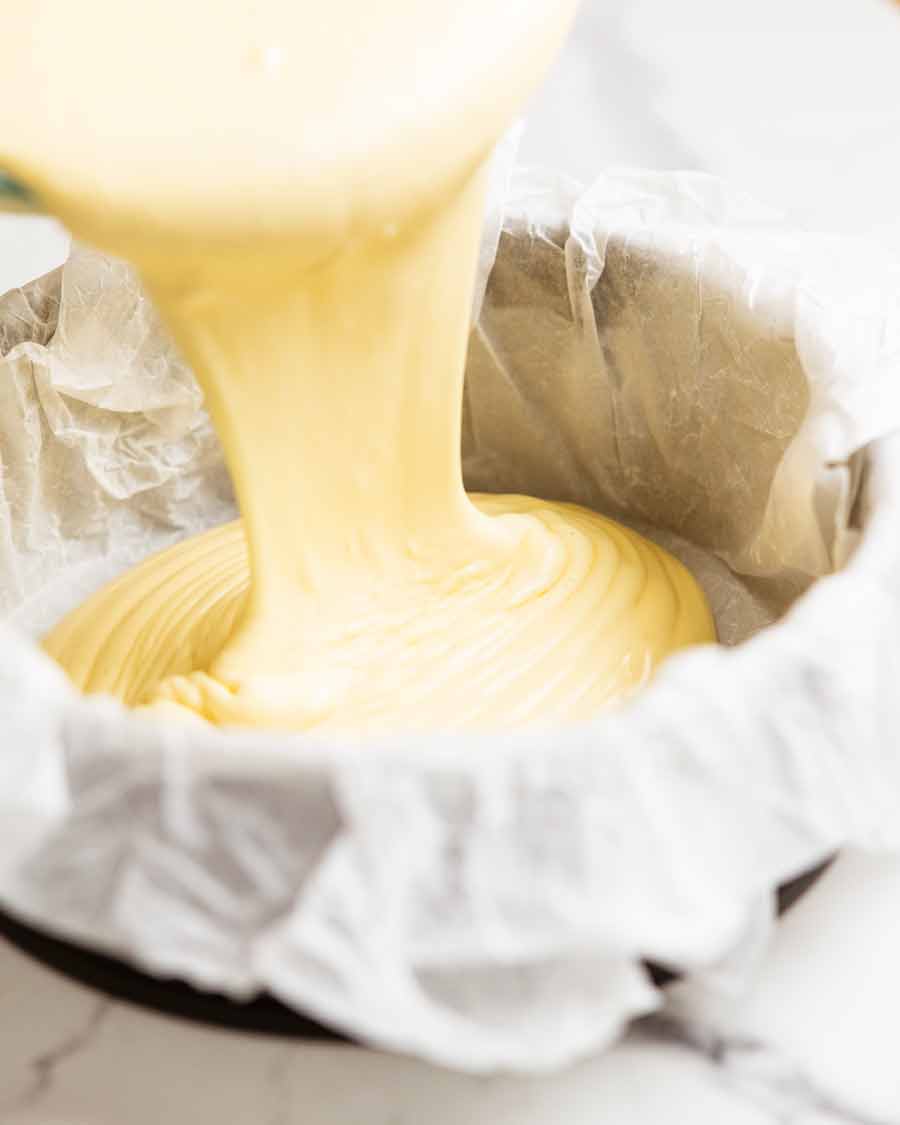
BAKING AND COOLING
Bake until the surface is deeply caramelised but not burnt. The baking times will vary from oven to oven, but the inside will be the same light and airy whether it takes 45 minutes (my oven) or 65 minutes (JB’s oven). We checked this multiple times because we couldn’t believe our eyes!

-
Bubble popping – For a lovely blemish free surface, bang the pan on the counter to make bubbles rise to the surface. Then pop the bubbles with a small sharp knife. Repeat 2 or 3 times. This is for visuals only, it’s not a big deal!
-
Bake for 45 minutes in a hot 220°C / 425°F (200°C fan-forced), or until the surface is a deep golden brown. Keep a close eye on it for the last 15 minutes. There’s a fine line between “deeply caramelised” and “burnt”. Don’t fall on the wrong side of the line!
⚠️ Bake time variations – With the many versions we tested, we found that the bake time can vary wildly between ovens. With most ovens, it takes 45 minutes. But in other ovens, it was taking as long as 65 minutes for the surface to become golden – and that’s ok! The inside will still be creamy. This was an incredible observation from the many versions we made. This cheesecake batter is extremely forgiving!
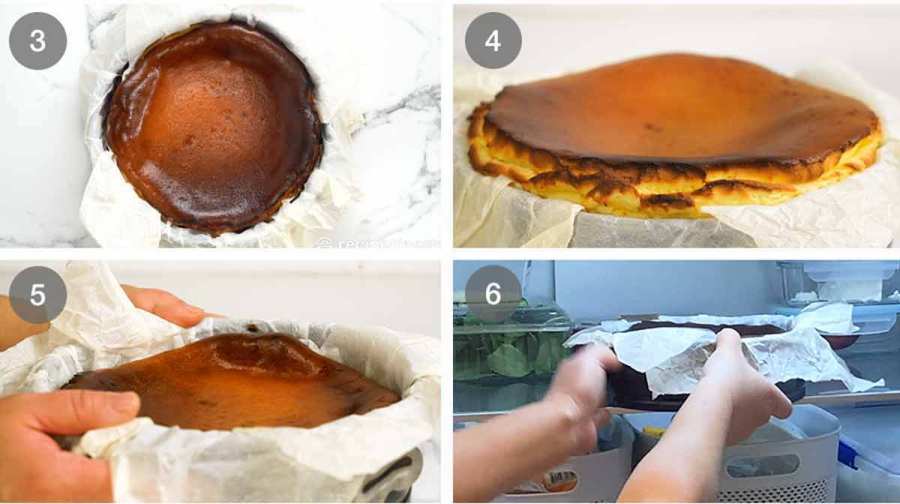
-
This is the colour we’re aiming for. Very deep golden brown but not actually burnt on the edges. And a little paler in the middle. The centre should be jiggly like soft jelly! If it’s not wobbly, it’s overcooked = dry cheesecake = 😭 The jiggly centre will firm up once refrigerated.
-
Rise & fall – As it bakes, the cheesecake rises dramatically like a soufflé. It even rises above the rim of a 6cm / 2.5″ cake pan! But don’t get too excited because as it cools, it collapses….
-
Collapsed – And here it is once cool. The crater is totally normal. 🙂
-
Cool – Let the cheesecake cool on the counter for a couple of hours. Then refrigerate uncovered for at least 8 hours, preferably overnight.
I refrigerate uncovered because even the smallest amount of residual heat left in the centre of the cheesecake will cause condensation which will drip and blemish the beautiful bronzed surface.
Once the cheesecake has been refrigerated, it’s time to EAT!!
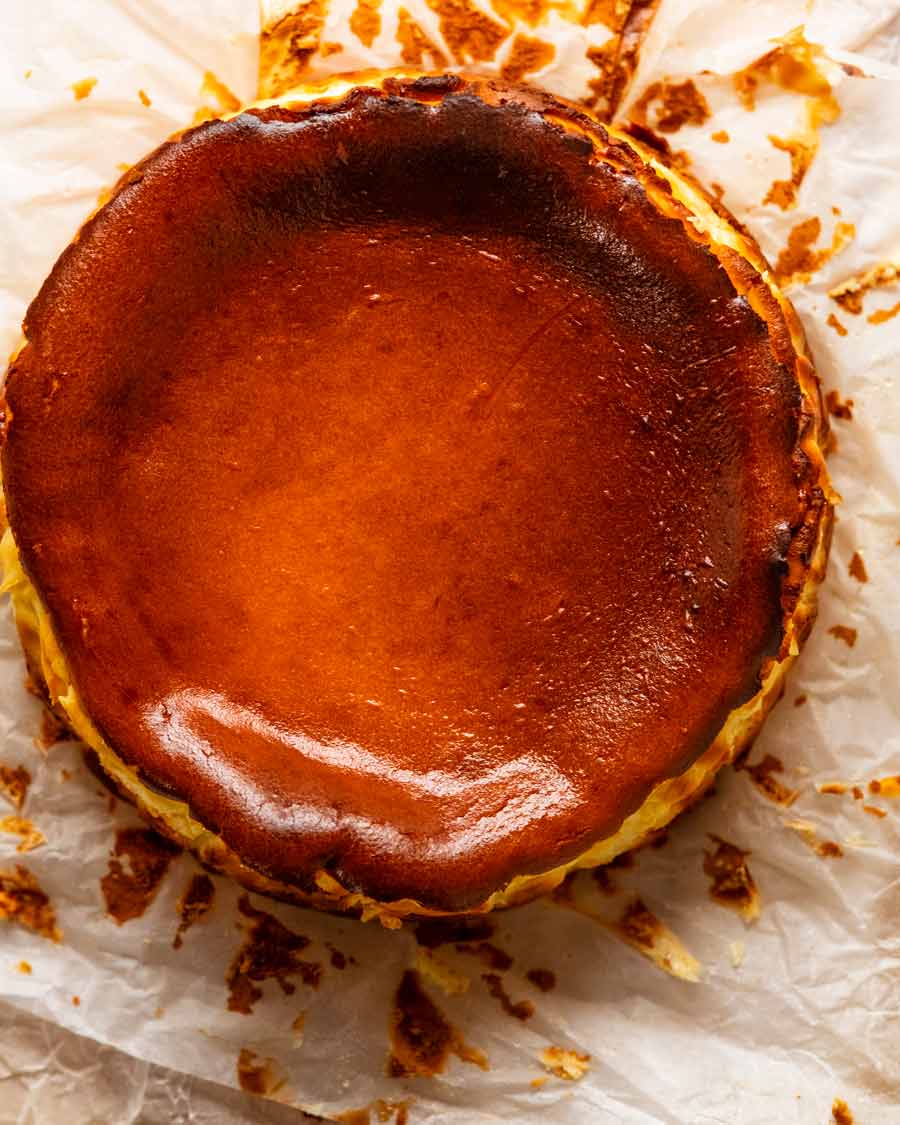
Matters of serving
I like to serve Basque Cheesecake on the paper because it looks rustic, the classic Basque Cheesecake look.
But you can absolutely do a neater presentation and transfer to a cake platter without the paper. Once refrigerated overnight, so it’s easy to handle.
It cuts into neat slices, so serve it like cake. For neat slices, wipe the knife clean between each cut. You can dip into a jug of warm water, if you like, but it will smear the cut face. I personally prefer the “sponge-like” look so I just wipe the knife clean.
As for what to serve Basque Cheesecake with? Absolutely nothing. No cream, no berries, no coulis, no sauce. It doesn’t need it. Enjoy every bite plain, and if you don’t sigh with satisfaction, you must be made of stone. – Nagi x
